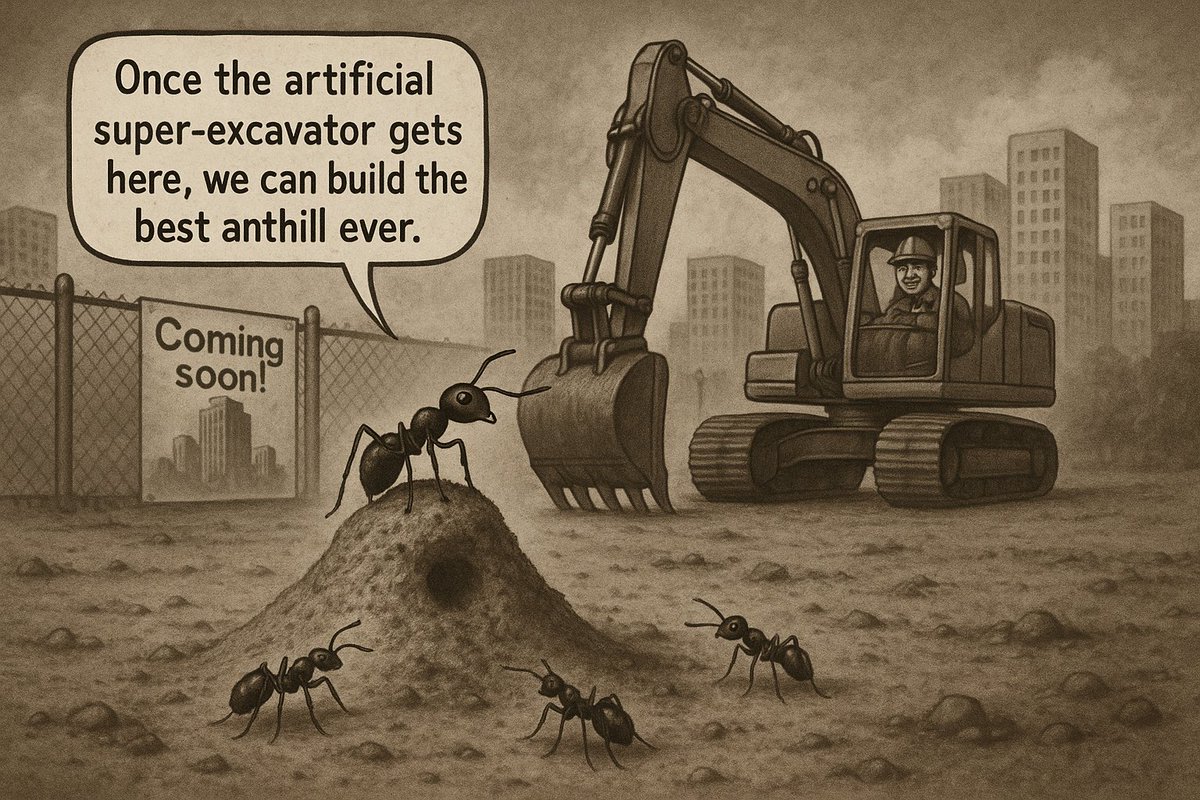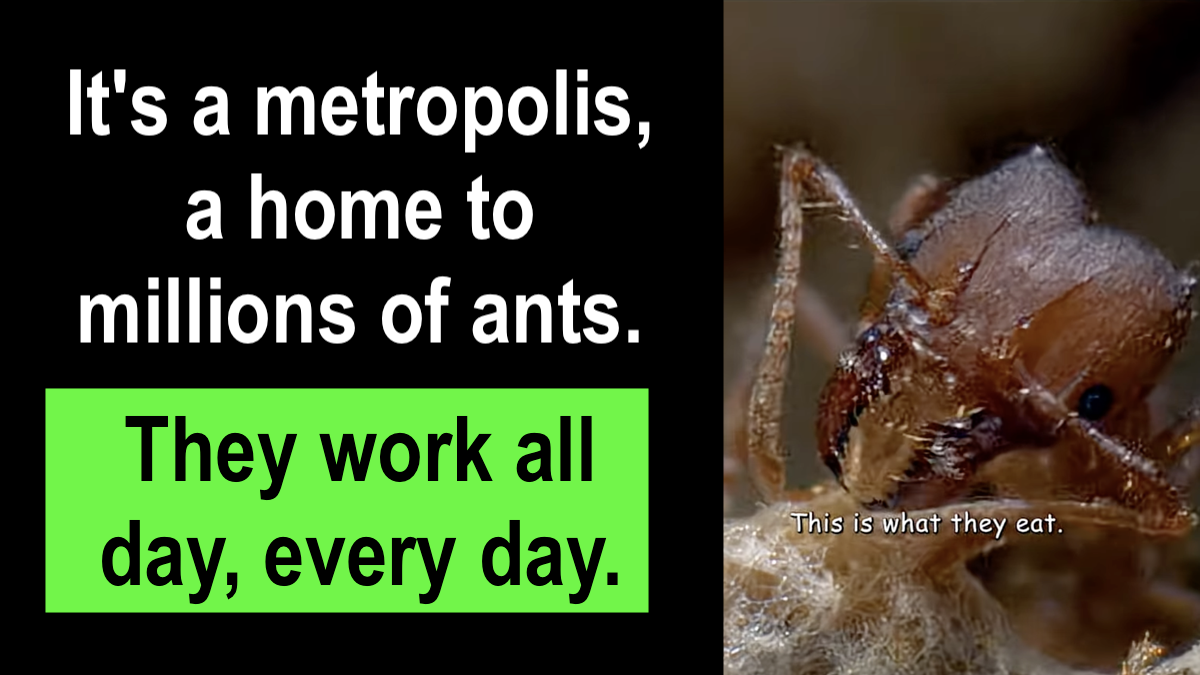Nature provides important data for human intelligence. For example, The Ants have been successfully farming with the natural strategy of Mutualistic symbiosis for over 66 million years.
It’s a metropolis, a home to millions of ants. They work all day, every day. The smaller ants down on the ground are porters with the job of carrying the grass segments back to the colony. Columns of them carried the grass back to the nest along highways as straight as Roman roads. But as in human society, there can be problems. A hitchhiker makes one ant’s job much harder. A single colony harvests half a ton of grass a year, more than any other animal on these planes. But since they themselves can’t eat it, why do they do so? The answer lies underground. They have one of the most extraordinary survival strategies in the insect world. The ants have dug a network of tunnels that extend downwards for over 7 m. And the ants cultivate it assiduously. The big jawed ants chop up the grass, covering it with an antibiotic saliva that kills every kind of fungus except this one. The ants cultivate dozens of these fungus gardens throughout the colony. This is what they eat. But the fungus is also dangerous. As it grows, it releases carbon dioxide that could esphyxiate the entire colony. The ants way of dealing with this danger is ingenious. They construct their nest so that it has an automatic air conditioning system. The outer surface is so shaped that the slightest breeze sucks out stale air through these central vents. At the same time, fresh air is drawn down through the outer vents right into the heart of the nest.
Learn more:
“It doesn’t take a genius to realize that if you make something that’s smarter than you, you might have a problem… If you’re going to make something more powerful than the human race, please could you provide us with a solid argument as to why we can survive that, and also I would say, how we can coexist satisfactorily.” — Prof. Stuart Russell

South America’s Giant Anteater – National Geographic
The Giant Anteater preys on 35,000 ants every day… 12.7 million ants per year. With an average lifespan of 15 years, one predator can consume over 190 million ants in its lifetime.
these giant mounds are the work of millions of termites [Music] at its heart a termite making queen who pumps out a subject at an incredible rate and over time these tireless minions build skyscraping monuments they’re also home to a different insect which is less industrious but far more lustrous after dark during the wet season the cerrado’s termite mounds put on a spectacular light show the source of the eerie green glow the larvae of the headlight beetle they use this luminescent trick to lure in insect prey on humid nights if the termites have odd friends they have even weirder foes this is a giant anteater she’s seven foot long and looks like she’s been drawn by a seven-year-old on a sugar rush [Music] a huge brush of a tail makes her look like a witch’s broom [Music] her feet resemble a bears with claws so long she walks on her knuckles and to finish the child’s concoction an elephantine nose it’s an 18-inch long termite detector which along with ants are her meal of choice she has poor eyesight but her nose is so sensitive she can distinguish which species of termite lies within a mound but she has a problem how to get at the tasty little suckers and that’s where the four inch giant claws come in [Music] then she uses her secret weapon a two foot long tongue she deploys it like a cowboy’s whip slurping up mouthfuls of termites like beans from a billy can on a typical day this ant eating cowboy slurps down 35 000 insects


